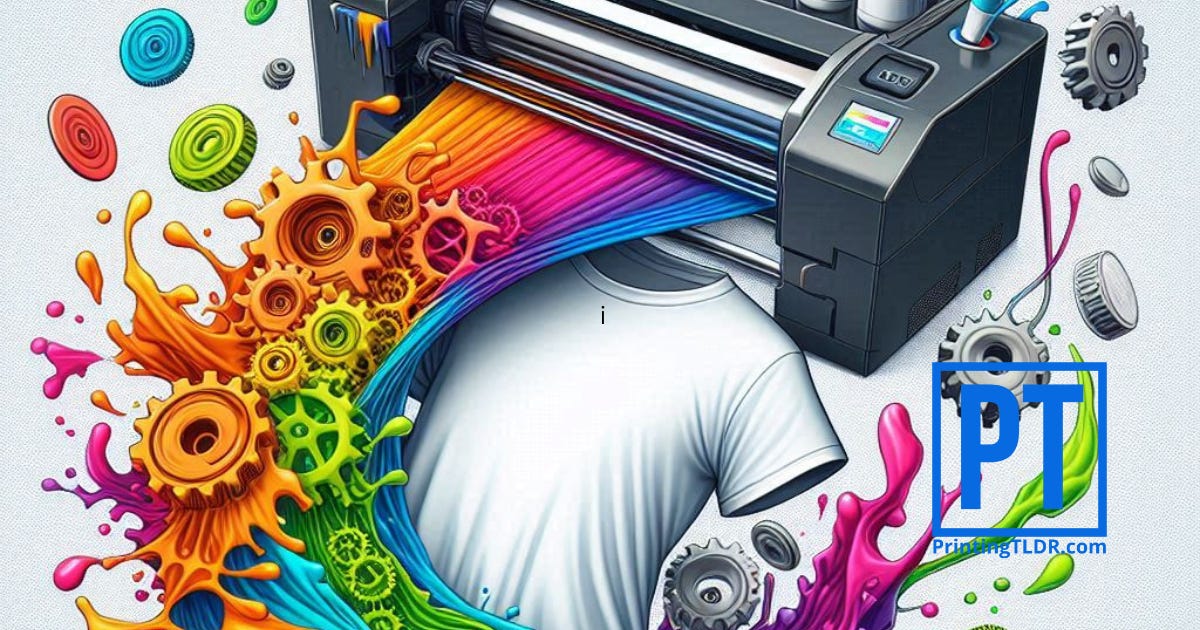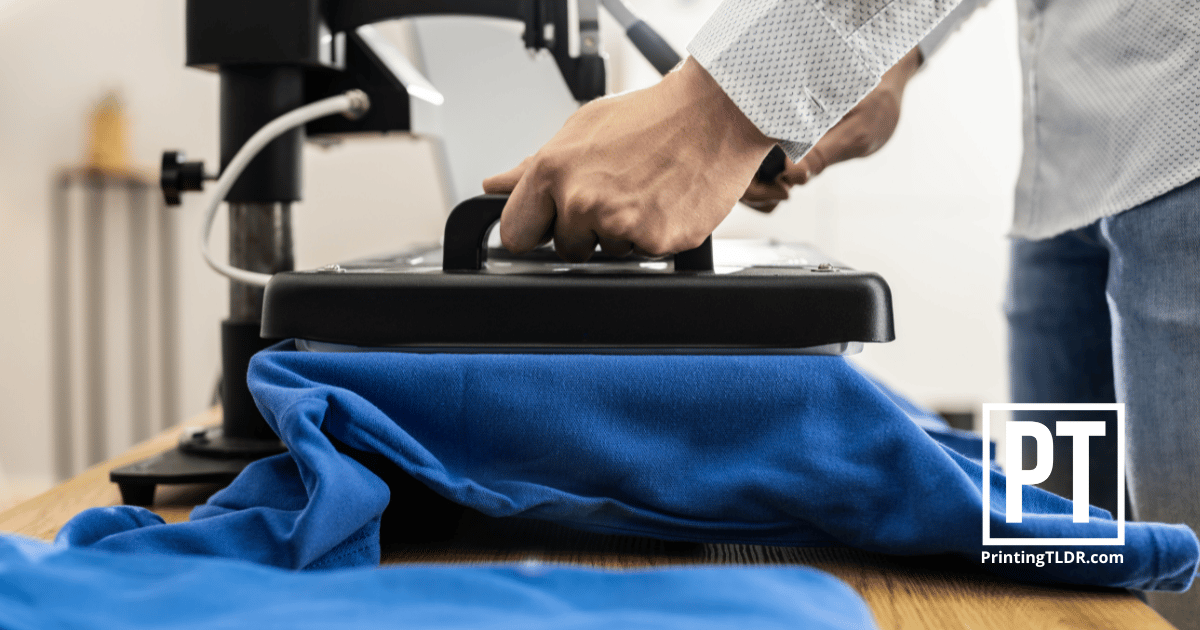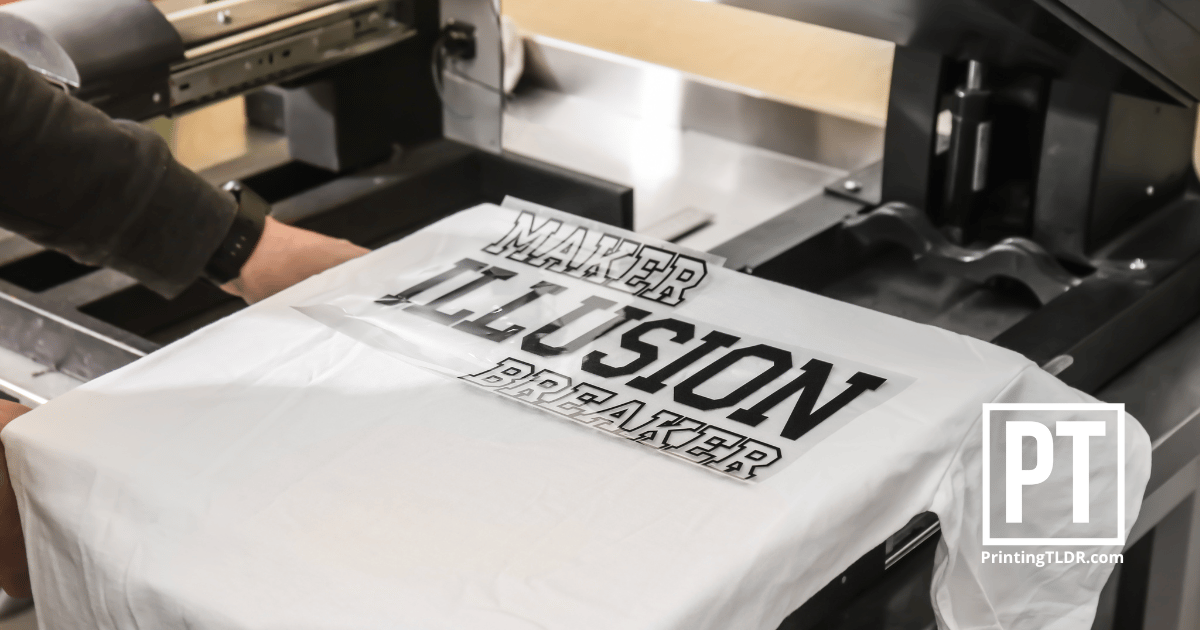An Introduction to DTF (Direct To Film) Printing
What is DTF Printing?
DTF Printing - Introduction
Direct To Film (DTF) printing is gaining traction as a preferred choice for textile and apparel designers and businesses. As the printing industry continuously evolves, DTF emerges as a beacon of innovation, offering an exciting alternative to traditional methods like direct-to-garment (DTG) and screen printing
Understanding DTF Printing
DTF printing, as its name suggests, involves printing designs directly onto a special type of film. This approach is distinct from, for example, DTG, where designs are printed straight onto the fabric. To the uninitiated, these methods might seem similar, but the subtleties in the process and results set them apart.
What is DTF?
At its core, DTF is about transferring designs from a PET film onto fabric. Using unique DTF inks, designs are first imprinted on this film. The significance of this method becomes evident when we dive into the actual printing process, which unveils the unique steps and considerations exclusive to DTF.
The DTF Printing Process
Every printing technique has its signature workflow, and DTF is no exception. Here's a glimpse into the stages that define DTF:
1. Printing the Design
PET Film: This is the canvas where the magic begins. A design is rendered onto this film, serving as an intermediary between the digital design and the final fabric.
DTF Inks: Not all inks are made equal. DTF inks are specially formulated for this process, ensuring that the colors are vibrant and the transfer is smooth.
2. Application of Adhesive Powder
Once the design is in place, the next step is crucial to ensure that the print adheres well to the fabric.
Why Adhesive Powder?: This powder acts as a bridge, bonding the design ink with the fabric when heat is applied. Without this adhesive, the design would not set correctly on the material.
Drying the Design: After the adhesive powder is sprinkled onto the design, it's essential to dry it. This drying process ensures that the adhesive sticks to the ink, preparing it for the transfer.
3. Transfer to Fabric
Once the design is printed and the adhesive is firmly set, it's time for the transformation.
Using a Heat Press: With the design ready on the film, it's placed on the chosen fabric. A heat press is then used to finalize the transfer. The combination of pressure and heat ensures that the design adheres to the fabric seamlessly.
The Result: Post-transfer, what we have is a vibrant, high-resolution design imprinted onto the fabric. The print feels smooth to touch, and its finish is comparable, if not superior, to many other traditional printing methods.
Advantages of DTF Printing
Understanding any technology requires an awareness of its strengths. DTF printing has been gaining popularity, and here's why:
1. Versatility
Diverse Fabric Range: Whether it's cotton, polyester, leather, or nylon, DTF doesn't discriminate. Its ability to print on various materials makes it a go-to choice for designers who frequently switch between fabric types.
No Material Pretreatment: Unlike DTG, which often demands pretreatment for dark fabrics, DTF saves time by eliminating this step.
2. Vibrant Colors
Why So Bright?: DTF inks have a reputation. They're known to reproduce designs with clarity and brightness, capturing the nuances of colors and gradients with finesse.
Detail-Oriented: Beyond just color vibrancy, DTF excels in rendering intricate designs with a high level of detail.
3. Low Maintenance
A Reliable Partner: Clogging is a common issue in many printing methods, leading to interruptions and added maintenance costs. DTF printers, on the other hand, face this issue far less frequently, making them a dependable option.
4. Efficiency in Printing
Skipping the Pretreatment: As mentioned earlier, the ability to print directly without the need for pretreatment is not just a time-saver, but also a cost-effective approach, especially for businesses.
Limitations and Considerations
While DTF printing offers numerous benefits, it's essential to understand its limitations for a well-rounded perspective:
1. Durability
Lifespan Matters: DTF prints, though vibrant and sharp, might not always match the longevity of traditional screen prints. To maximize the lifespan, care instructions, such as washing inside-out or avoiding high heat, might be necessary.
2. Production Speed
Quantity vs. Quality: DTF excels in quality and versatility but might not always be the fastest method, especially for bulk orders. Businesses needing large volume prints in a short time might consider alternatives or blend DTF with other methods.
Applications and Use Cases
Given its unique attributes, where does DTF truly shine?
1. Short Runs & Custom Orders
Flexibility at its Best: For businesses offering custom designs or handling limited edition runs, DTF is ideal. It allows for quick changes between designs without extensive setup.
2. Detailed Designs
Precision Matters: If the design involves intricate patterns, gradients, or requires high-resolution prints, DTF should be top of the list.
3. Material Diversity
A Canvas for Every Idea: Whether printing on a standard t-shirt, a leather jacket, or a nylon bag, DTF has it covered. Its adaptability across materials allows designers to experiment and innovate.
Conclusion
Direct To Film (DTF) printing is undeniably a game-changer in the textile printing landscape. Its blend of versatility, vibrant color reproduction, and adaptability to various materials sets it apart. However, understanding its limitations is equally crucial to harness its full potential.
For businesses and designers aiming for flexibility, quality, and a broad canvas of material options, DTF printing is a promising avenue. As with any technology, leveraging its strengths while being mindful of its constraints ensures optimal outcomes.
Thus concludes our deep dive into the world of DTF printing. you're a seasoned designer or a newcomer to textile printing, we hope this article sheds light on this innovative method and inspires your next project.
Frequently Asked Questions (FAQ)
Q1. What does DTF stand for in printing?
A1: DTF stands for "Direct To Film." It's a printing method where designs are first printed onto a special PET film, which is then used to transfer the design onto fabric using heat.
Q2. How does DTF differ from DTG?
A2: While both DTF and DTG (Direct To Garment) are digital printing methods, DTF involves an intermediate step of printing onto a film, whereas DTG prints directly onto the fabric. Additionally, DTF can print on a broader range of materials without the need for pretreatment.
Q3. How long does a DTF print last on clothing?
A3: While the durability can vary based on factors like the fabric type and aftercare, typically, DTF prints can last for numerous washes. To maximize longevity, it's recommended to wash DTF-printed garments inside-out on a gentle cycle.
Q4. Can I print on dark fabrics using DTF?
A4: Yes, one of the advantages of DTF is its ability to print on both light and dark fabrics without requiring a pretreatment step.
Q5. Are there any specific inks for DTF?
A5: Yes, DTF uses specially formulated inks designed for the printing and subsequent transfer process. These inks ensure vibrant and durable prints.
Q6. Is DTF environmentally friendly?
A6: DTF inks are generally water-based, making them more eco-friendly than some solvent-based inks. However, like all printing methods, it's essential to manage waste and use materials responsibly.
Q7. Is DTF suitable for bulk printing?
A7: While DTF is excellent for quality and detail, it might not always be the fastest method for very large bulk orders. It's ideal for short runs, custom orders, and instances where material diversity is crucial.






